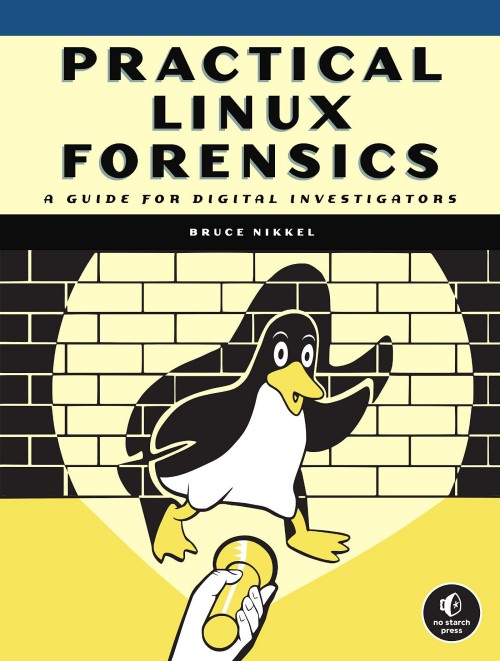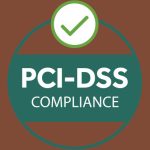Receive your first E-Book(s) on us valued up to $10, simply by registering an account today.
Practical Linux Forensics: A Guide for Digital Investigators
$11.99 Original price was: $11.99.$8.99Current price is: $8.99.
A resource to help forensic investigators locate, analyze, and understand digital evidence found on modern Linux systems after a crime, security incident or cyber attack.
Practical Linux Forensics dives into the technical details of analyzing postmortem forensic images of Linux systems which have been misused, abused, or the target of malicious attacks. It helps forensic investigators locate and analyze digital evidence found on Linux desktops, servers, and IoT devices. Throughout the book, you learn how to identify digital artifacts which may be of interest to an investigation, draw logical conclusions, and reconstruct past activity from incidents. You’ll learn how Linux works from a digital forensics and investigation perspective, and how to interpret evidence from Linux environments. The techniques shown are intended to be independent of the forensic analysis platforms and tools used.
Learn how to:
Extract evidence from storage devices and analyze partition tables, volume managers, popular Linux filesystems (Ext4, Btrfs, and Xfs), and encryption
Investigate evidence from Linux logs, including traditional syslog, the systemd journal, kernel and audit logs, and logs from daemons and applications
Reconstruct the Linux startup process, from boot loaders (UEFI and Grub) and kernel initialization, to systemd unit files and targets leading up to a graphical login
Perform analysis of power, temperature, and the physical environment of a Linux machine, and find evidence of sleep, hibernation, shutdowns, reboots, and crashes
Examine installed software, including distro installers, package formats, and package management systems from Debian, Fedora, SUSE, Arch, and other distros
Perform analysis of time and Locale settings, internationalization including language and keyboard settings, and geolocation on a Linux system
Reconstruct user login sessions (shell, X11 and Wayland), desktops (Gnome, KDE, and others) and analyze keyrings, wallets, trash cans, clipboards, thumbnails, recent files and other desktop artifacts
Analyze network configuration, including interfaces, addresses, network managers, DNS, wireless artifacts (Wi-Fi, Bluetooth, WWAN), VPNs (including WireGuard), firewalls, and proxy settings
Identify traces of attached peripheral devices (PCI, USB, Thunderbolt, Bluetooth) including external storage, cameras, and mobiles, and reconstruct printing and scanning activity
SKU
EBP_V6283673
Categories Computers, Forensics, Operating Systems
 Purchase this item and get 1 Point - a worth of $0.10
Purchase this item and get 1 Point - a worth of $0.10**A resource to help forensic investigators locate, analyze, and understand digital evidence found on modern Linux systems after a crime, security incident or cyber attack.** *Practical Linux Forensics* dives into the technical details of analyzing postmortem forensic images of Linux systems which have been misused, abused, or the target of malicious attacks. It helps forensic investigators locate and analyze digital evidence found on Linux desktops, servers, and IoT devices. Throughout the book, you learn how to identify digital artifacts which may be of interest to an investigation, draw logical conclusions, and reconstruct past activity from incidents. You’ll learn how Linux works from a digital forensics and investigation perspective, and how to interpret evidence from Linux environments. The techniques shown are intended to be independent of the forensic analysis platforms and tools used. Learn how to: * Extract evidence from storage devices and analyze partition tables, volume managers, popular Linux filesystems (Ext4, Btrfs, and Xfs), and encryption * Investigate evidence from Linux logs, including traditional syslog, the systemd journal, kernel and audit logs, and logs from daemons and applications * Reconstruct the Linux startup process, from boot loaders (UEFI and Grub) and kernel initialization, to systemd unit files and targets leading up to a graphical login * Perform analysis of power, temperature, and the physical environment of a Linux machine, and find evidence of sleep, hibernation, shutdowns, reboots, and crashes * Examine installed software, including distro installers, package formats, and package management systems from Debian, Fedora, SUSE, Arch, and other distros * Perform analysis of time and Locale settings, internationalization including language and keyboard settings, and geolocation on a Linux system * Reconstruct user login sessions (shell, X11 and Wayland), desktops (Gnome, KDE, and others) and analyze keyrings, wallets, trash cans, clipboards, thumbnails, recent files and other desktop artifacts * Analyze network configuration, including interfaces, addresses, network managers, DNS, wireless artifacts (Wi-Fi, Bluetooth, WWAN), VPNs (including WireGuard), firewalls, and proxy settings * Identify traces of attached peripheral devices (PCI, USB, Thunderbolt, Bluetooth) including external storage, cameras, and mobiles, and reconstruct printing and scanning activity
| Book Author: | Bruce Nikkel |
|---|---|
| Language: | English |
| Pages: | 847 |
| Publisher: | No Starch Press |
| Publication Date: | 2021 |
| ISBN-13: | 9781718501966 |
| Format: | iPhones/iPads/Mac (Apple Books), Androids/PCs (Google Play), Kobo, Nook, Kindle |
Only logged in customers who have purchased this product may leave a review.
Best seller of the week
-
The Paper Lion
$10.99Original price was: $10.99.$8.99Current price is: $8.99.Rated 0 out of 5Add to cart -
Put Me in the Zoo
$10.99Original price was: $10.99.$8.99Current price is: $8.99.Rated 0 out of 5Add to cart -
The Password to Larkspur Lane
$9.99Original price was: $9.99.$7.99Current price is: $7.99.Rated 0 out of 5Add to cart
















Reviews
There are no reviews yet.